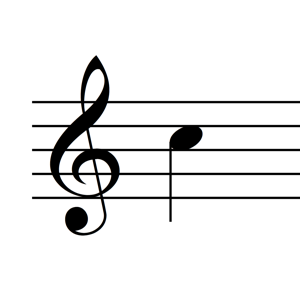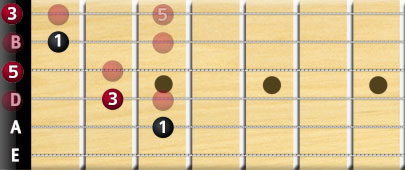

The remainder of this chapter will be devoted to rhythmic durations and how to notate them. Most of the notes in the excerpts above, for example, don’t last an entire beat. Notes can be shorter than a beat as well. Notes can last for any length of time: a note can last for an entire beat or even multiple beats. Rhythm, on the other hand, refers to the variety of note and rest durations that appear in the context of the meter. In this book, however, we will focus on only the most common meters: those that group beats into sets of two, three, or four.

With these meters, you may find the beats organized into groups of five, seven, or more pulses per measure. Note: Besides duple, triple, and quadruple meters, you will occasionally come across other, more complex meters. The higher pitched click corresponds with the strong beats while the lower pitched click corresponds with the weak beats. As above, a click track has been added in the second audio recording. The following example shows the strong and weak beats in the first four measures of the same excerpt. We refer to this type of beat grouping as a duple meter because the beats are grouped in twos: one strong and one weak. In Example 1–3, we saw and heard how every other beat was emphasized: strong-weak-strong-weak-strong, etc. When we talk about meter, we refer to how the basic beats are grouped. Generally speaking, the beat of a piece of music occurs at a moderate pace: not too fast, not too slow. In other words, if you heard a pulse that was rather quick, it’s likely that you were tuned into a division of the beat instead of the beat itself. Not to worry! As we will discuss in a moment, meter consists of a hierarchical set of pulses. Note: You may have found that as you were tapping along to the example above, you found that there were several different pulses happening at once. These observations form the basis for distinguishing between rhythm and meter, though it is important to keep in mind that both of these concepts are closely interrelated. There are many different note durations in this excerpt-some are equal to the beat while others are shorter or longer. For another, the actual music only rarely just follows the beat. In this case, the beats alternate between strong beats and weak beats. For one, certain beats seem stronger than others.

If you are still having difficulty, try listening to the second audio clip which adds a click track highlighting the beat.Īs you became aware of the steady beat in the example above, chances are you noticed several things. You may find that even with just two listenings, you will be quite familiar with this excerpt. Being familiar with a piece of music helps a great deal in analyzing it, particularly with regards to rhythm and meter. If you were unable to identify a steady pulse while listening to this example, try listening to it again.


 0 kommentar(er)
0 kommentar(er)
